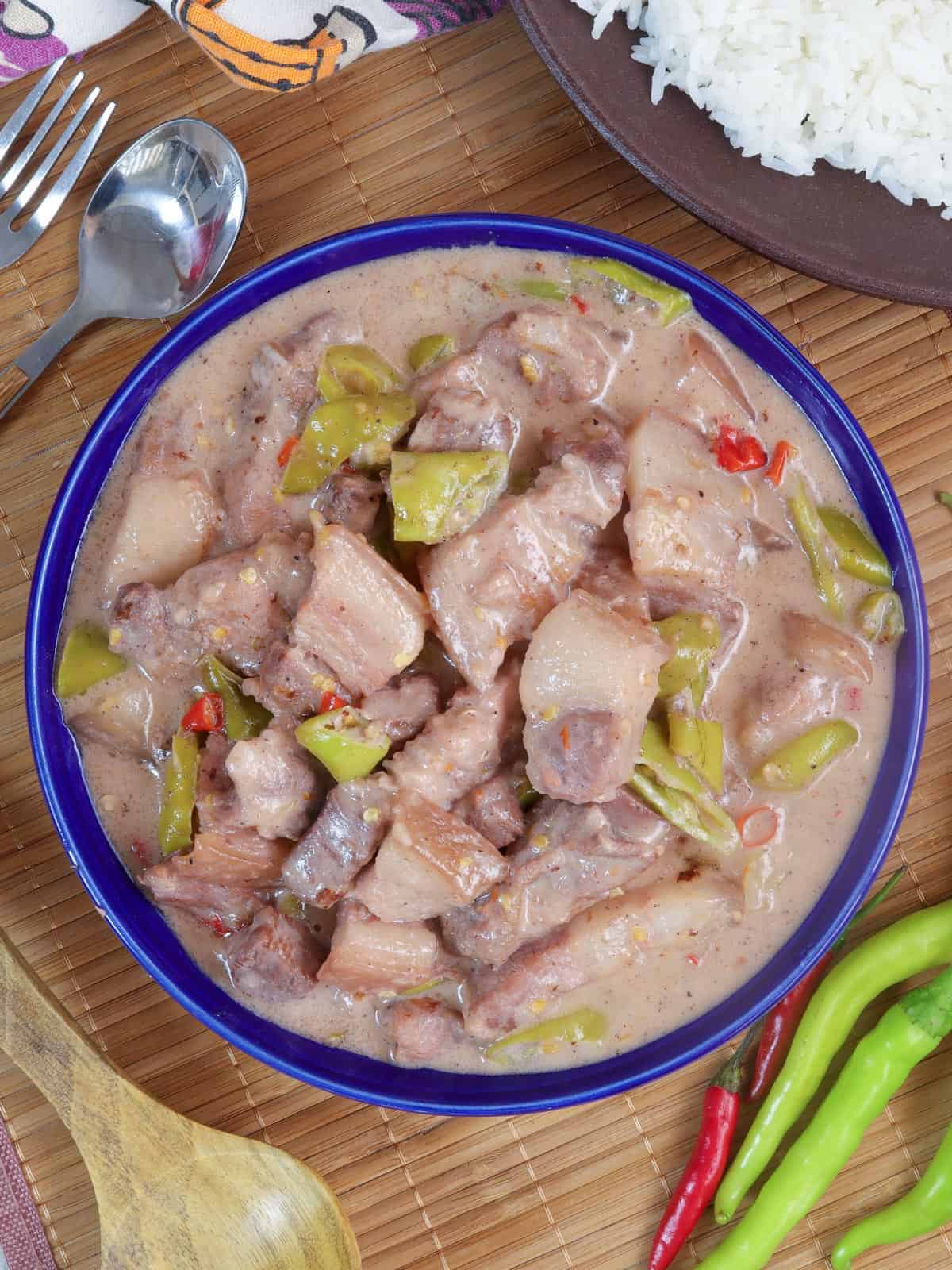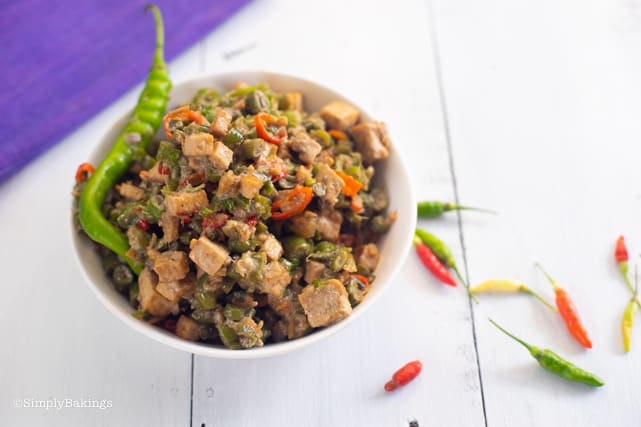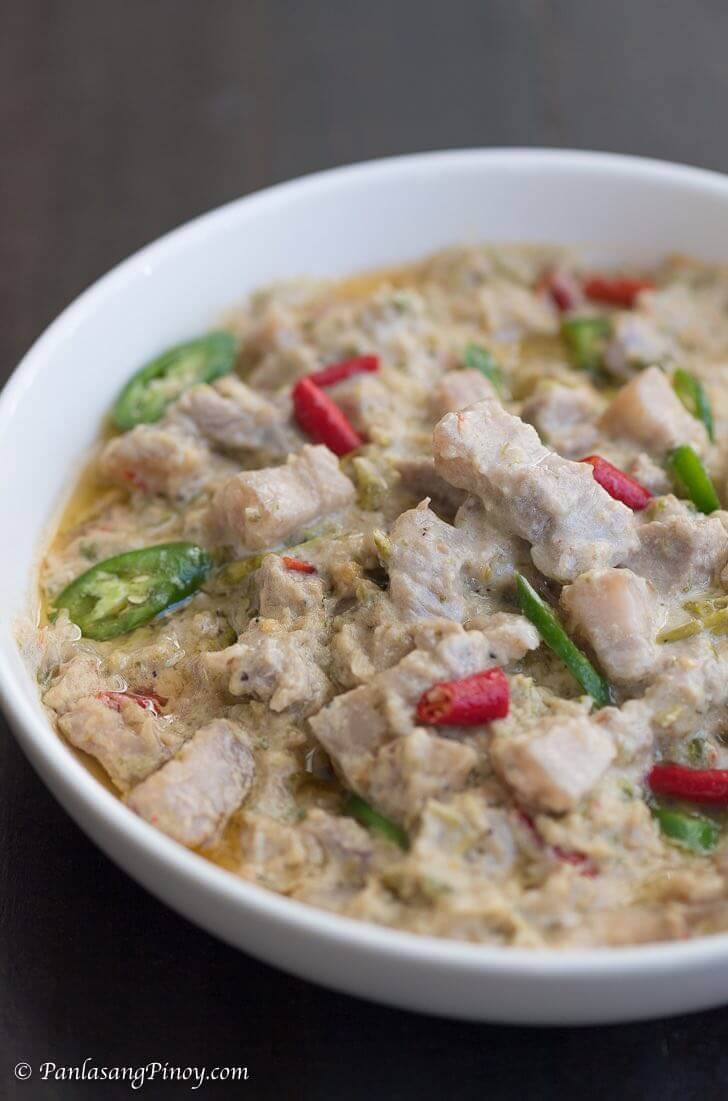Bicol Express
sinilihan
Bicol express, known natively in Bikol as sinilihan , is a popular Filipino dish which was popularized in the district of Malate, Manila, but made in traditional Bicolano style. It is a stew made from long chili peppers (siling haba in Tagalog) or small chili peppers (siling labuyo in Tagalog), coconut milk/coconut cream (kakang gata in Tagalog), shrimp paste (bagoong alamang in Tagalog) or stockfish, onion, pork, ginger and garlic. The dish was termed by Laguna resident, Cely Kalaw, during a cooking competition in the 1970s in Malate, Manila. The name of the dish was inspired by the Bicol Express railway train (Philippine National Railways) that operated from Tutuban, Manila to Legazpi, Albay (regional center of the Bicol region). The widely-known name for this dish in the Bicol Region of the Philippines was identified as gulay na may lada, which is currently one of the vegetarian variants of the Bicol express dish. As time progressed, variants of the Bicol express dish expanded with seafood, beef, pescatarian, vegetarian, vegan, and other versions. The preparations for these dishes vary according to the meat present within the dish. In terms of nutritional value, the original version of the Bicol express dish is beneficial in protein but unhealthy in regards to its high levels of saturated fats and cholesterol. The dish has moved into food processing and commercial production so that it can be sold conveniently and stored for a longer period of time. See Bicol for full etymology. The name derives originally from the spelling systems of Spanish and then integrated with the spelling systems of English. There were three types of Spanish derivatives of Bicol; 'Vicor', 'Vicol', and 'Bico', because the Spanish did not distinguish /b/ and /v/ in their pronunciation.
Source: Wikipedia

















